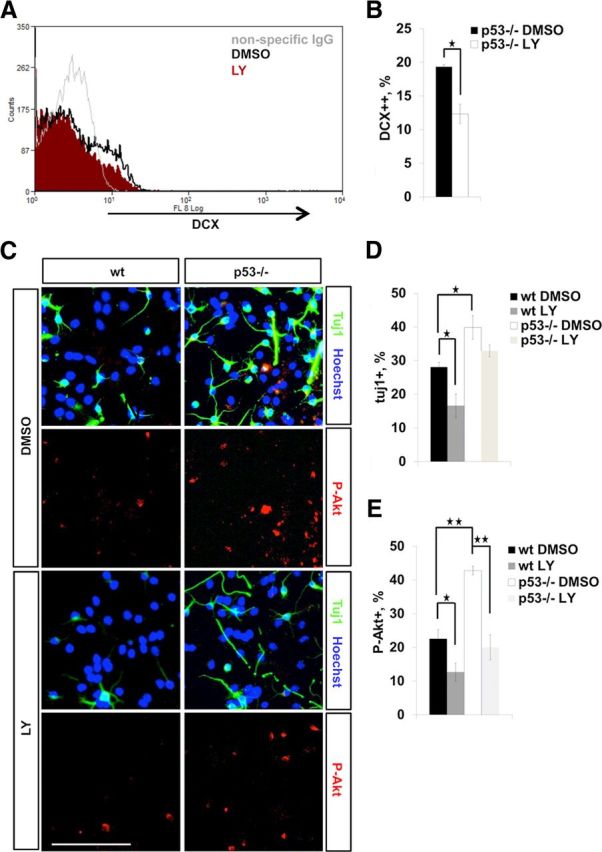Figure 10.

A, FACS of DMSO (control) and 10 μm LY294002 (a PI3K inhibitor) pretreated E13 p53−/− neurospheres. Nonspecific IgG was used for background staining control. B, The bar graph shows that 10 μm LY294002 treatment reduces the number of DCX+ (strongly positive) NPCs as assessed by FACS (A). Data represent mean percentage of DCX++ NPCs ± SEM from three independent experiments. C, Immunocytochemistry for Tuj1 (green) and P-Akt (red) on differentiating wild-type and p53−/− neural progenitors after 10 μm LY294002 pretreatment. Proliferative NPCs were pretreated either with DMSO or 10 μm LY294002, and thereafter plated for differentiation without LY for 5 d. LY294002 pretreatment decreases the number of Tuj1+ and P-Akt+ neurons generated upon differentiation. Scale bar, 100 μm. D, The bar graph shows quantification of Tuj1+ neurons from LY294002-pretreated differentiating NPC cultures. Shown is mean percentage of Tuj1+ neurons normalized to the total number of cells (Hoechst+) ± SEM from three independent experiments. E, The bar graph shows quantification of P-Akt+ neurons from LY294002-treated differentiating NPC cultures. Shown is mean percentage of P-Akt+ neurons normalized to the total number of cells ± SEM from three independent experiments (N = 3). ★p < 0.05; ★★p < 0.01 (two-tail t test).
